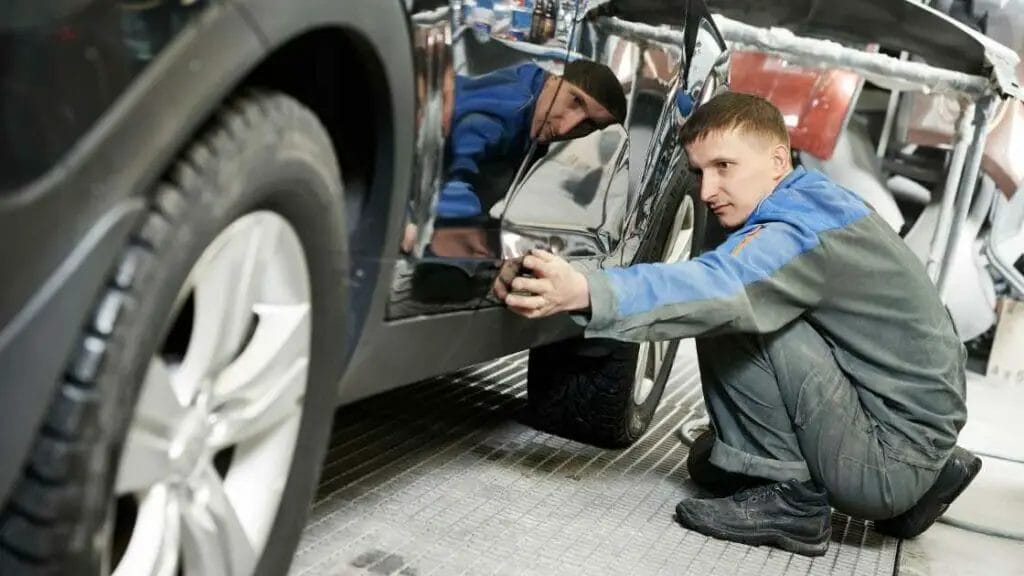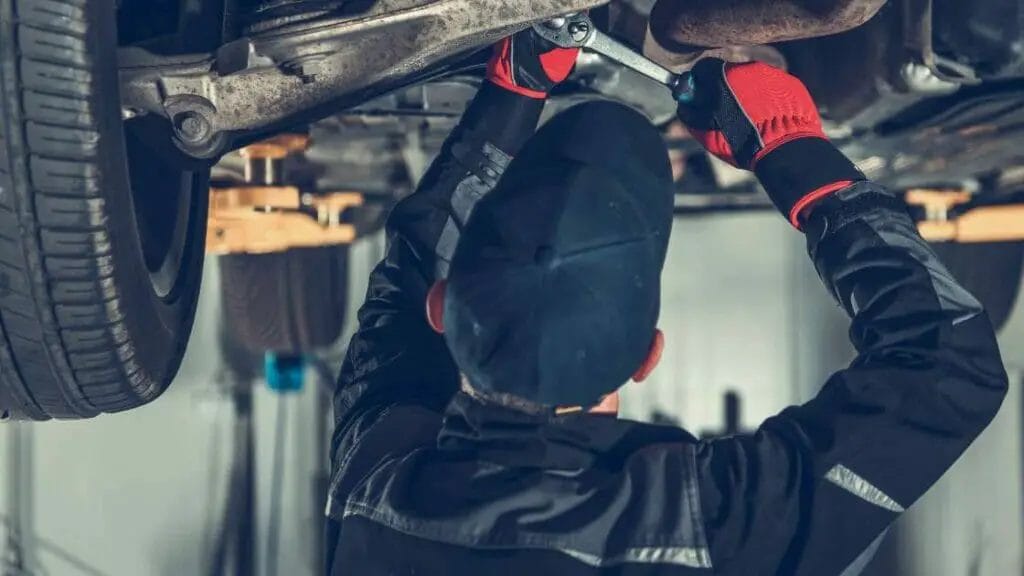Hearing a soft or loud strange clunking noise when driving, especially when hitting uneven pavements or road humps, should always be a cause for concern as it could be life-threatening.

If your vehicle is making strange clunking noises, it’s time to consider getting an alignment.
A misaligned vehicle can cause a host of issues, including those annoying clunking sounds. But what exactly is an alignment, and how can it fix these noises?

Understanding Vehicle Alignment
An alignment is the process of adjusting the angles of your vehicle’s wheels to ensure they are parallel and perpendicular to the ground.
When your wheels are out of alignment, it can lead to uneven tire wear and affect your vehicle’s handling and performance.
But more importantly, misaligned wheels can cause components to rub against each other, resulting in those dreaded clunking noises.
Vehicle alignment is crucial for maintaining the proper contact between your tires and the road surface.
When your wheels are aligned correctly, each tire will have an equal distribution of weight, allowing for optimal traction and control.
However, when your wheels are misaligned, it can lead to uneven tire wear and compromised handling.
Common Signs of Misalignment
Misalignment can manifest in various ways, and it’s essential to recognize the common signs to address the issue promptly.
One of the most obvious signs is when your vehicle starts to make clunking or banging noises, especially when going over bumps or uneven surfaces.
These noises can indicate that the wheels are not aligned correctly, causing components to rub against each other.
Another sign of misalignment is uneven tire wear. Take a look at your tires and check if the tread is wearing down unevenly.
If you notice more wear on one side of the tire compared to the other, it’s a clear indication that the wheels are out of alignment.
Uneven tire wear not only affects your vehicle’s performance but also compromises your safety on the road.
Causes of Misalignment
Misalignment can occur due to various factors, some of which are unavoidable.
One common cause is hitting potholes or curbs with force, which can jolt the wheels out of alignment.
Additionally, accidents or collisions can also result in misalignment, as the impact can shift the position of the wheels.
Another cause of misalignment is normal wear and tear.
Over time, the components that hold your wheels in place can become worn or loose, leading to misalignment.
Regular maintenance and inspections can help identify and prevent misalignment caused by wear and tear.
The Importance of Fixing Alignment Issues
Ignoring misalignment can have serious consequences for both your vehicle’s performance and your safety.
When your wheels are misaligned, it puts unnecessary strain on the suspension system, causing premature wear and potential damage to other components.
This can result in costly repairs down the line.
Furthermore, misalignment affects your vehicle’s handling and stability.
Your steering may feel off-center, and you may notice that your vehicle pulls to one side. This not only makes driving less enjoyable but also compromises your ability to maneuver safely on the road.
Getting an alignment can restore proper handling and ensure a smooth and comfortable ride.
How Alignment Affects Clunking Noises
Misaligned wheels can cause clunking noises due to the rubbing of components.
When your wheels are not aligned correctly, the tires can wear unevenly, leading to an imbalance in the suspension system.
As a result, various components, such as control arms, tie rods, or ball joints, can come into contact and produce those unsettling clunking sounds.
An alignment adjusts the angles of your wheels, ensuring they are parallel and perpendicular to the ground.
By realigning the wheels, the components will no longer rub against each other, eliminating the clunking noises.
Additionally, a properly aligned vehicle reduces the strain on the suspension system, preventing premature wear and potential damage.
Steps to Fix Alignment and Eliminate Clunking Noises
To fix alignment issues and eliminate clunking noises, it’s best to seek professional assistance. A qualified technician will use specialized equipment to measure the angles of your wheels accurately.
Based on these measurements, they will make adjustments to bring your wheels back into proper alignment.
The alignment process typically involves adjusting the camber, caster, and toe angles of each wheel.
Camber refers to the inward or outward tilt of the wheels when viewed from the front. Caster relates to the forward or backward tilt of the steering axis. Toe refers to the angle at which the tires point inward or outward when viewed from above.
By adjusting these angles, the technician can ensure that all four wheels are aligned correctly.
DIY Alignment vs. Professional Alignment
While it may be tempting to attempt a DIY alignment to save money, it’s important to note that proper alignment requires specialized equipment and expertise.
A DIY alignment using basic tools may not yield accurate results, and you may end up causing more harm than good.
Professional alignment services offer several advantages, including:
- Knowledge and experience to perform precise measurements and adjustments.
- Can identify any underlying issues that may be contributing to the misalignment and address them accordingly.
- Professional alignment services often come with warranties, providing you with peace of mind knowing that your alignment is covered.

Benefits of Professional Alignment Services
Investing in professional alignment services offers numerous benefits beyond fixing clunking noises.
Firstly, a properly aligned vehicle improves fuel efficiency.
When your wheels are aligned correctly, there is less resistance, allowing your vehicle to move more efficiently. This can result in savings at the pump over time.
Furthermore, alignment helps prolong the lifespan of your tires.
When your wheels are misaligned, the tires wear unevenly, leading to premature tire replacement.
By getting regular alignments, you ensure that your tires wear evenly, maximizing their longevity and saving you money in the long run.
Lastly, a properly aligned vehicle provides a smoother and more comfortable ride.
When your wheels are aligned, your vehicle’s suspension system works optimally, absorbing bumps and vibrations more effectively. This leads to a more enjoyable driving experience and reduced driver fatigue.
Preventing Future Alignment Issues
To prevent future alignment issues, it’s essential to maintain your vehicle properly.
Regularly inspect your tires for signs of uneven wear and ensure they are properly inflated.
Additionally, avoid hitting curbs or potholes with force, as this can jolt your wheels out of alignment.
Regular maintenance, including suspension and steering system checks, can also help identify and address alignment issues before they become major problems.